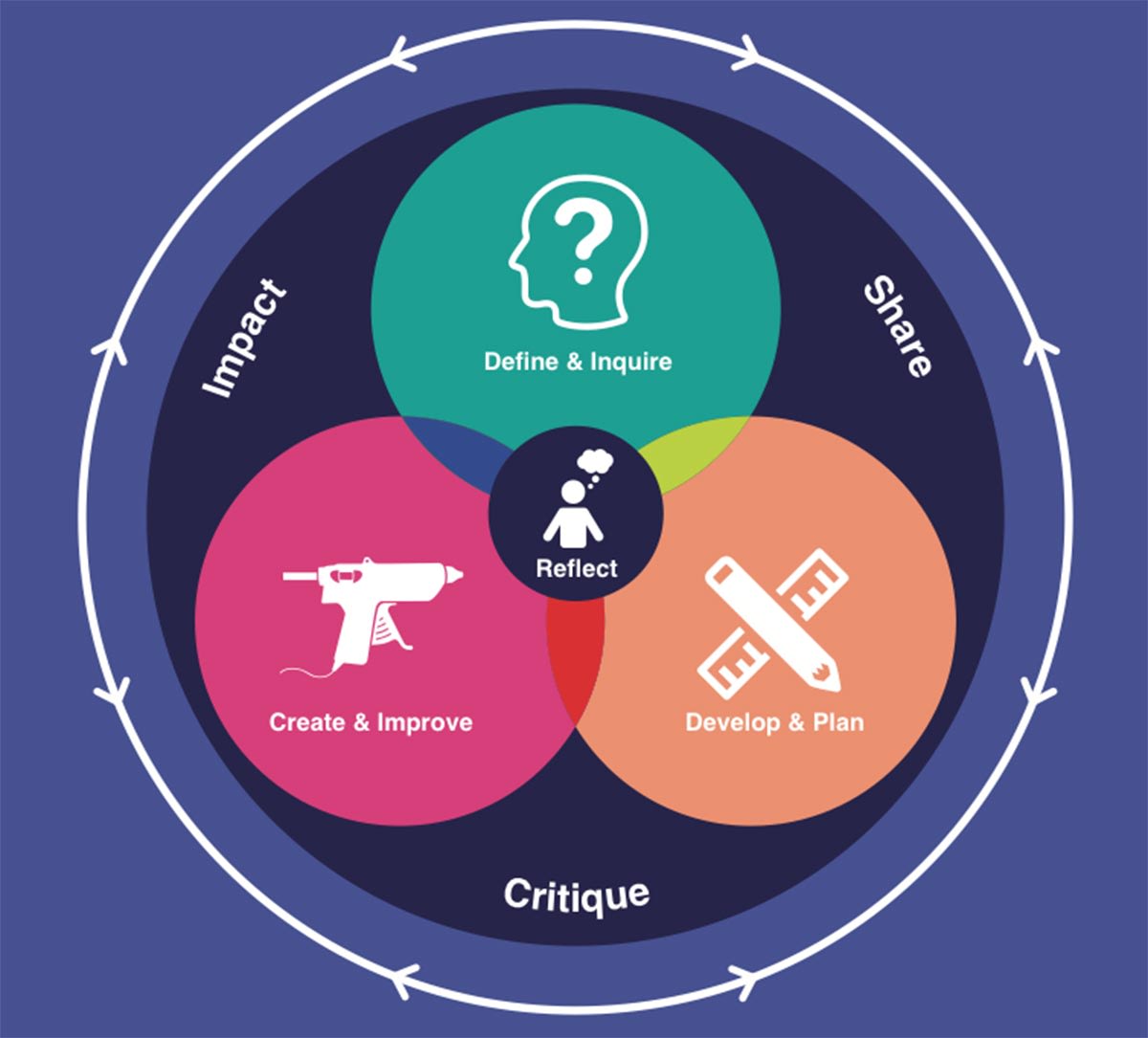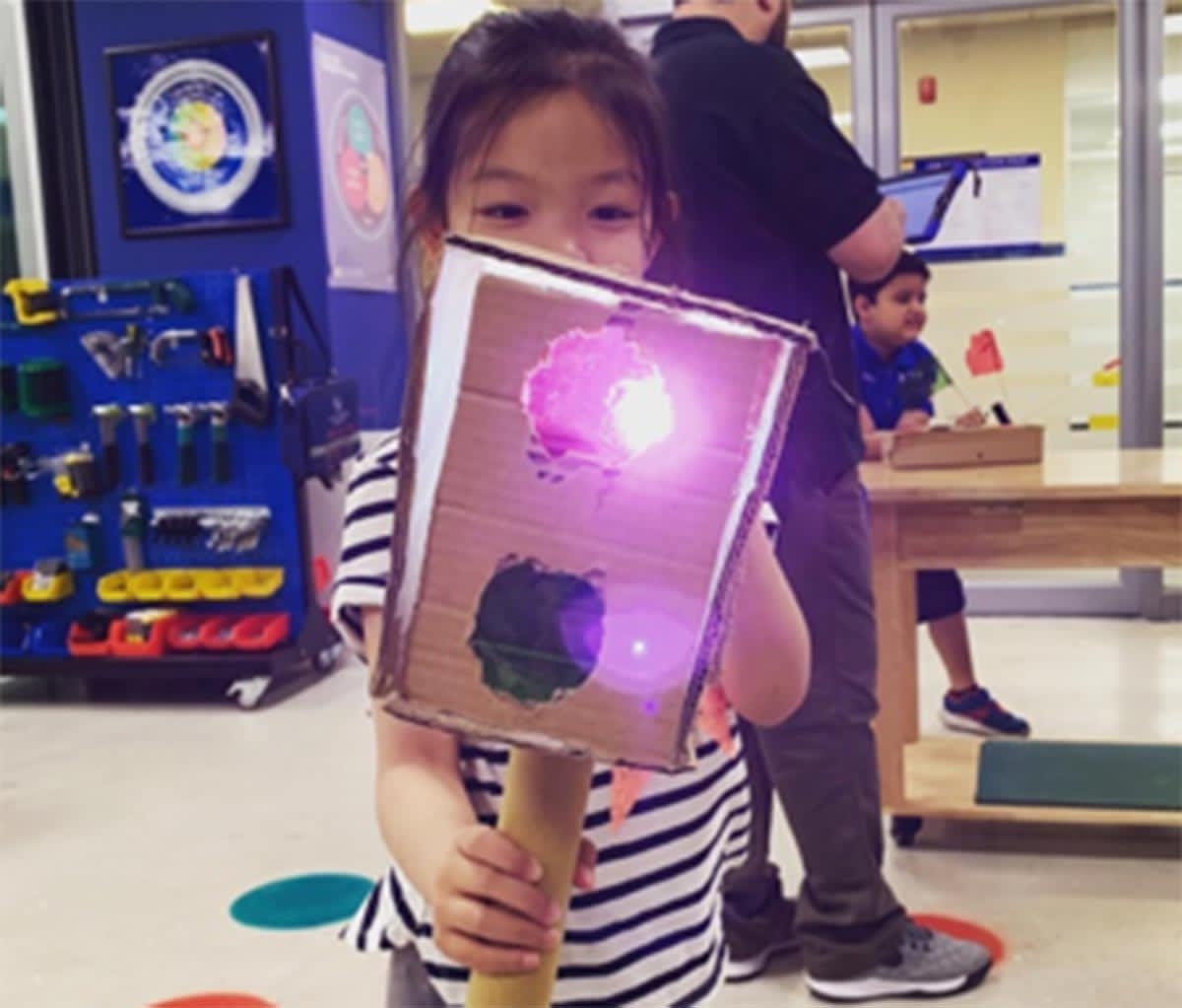Lowering Workbenches
By Angela Maez, ISB Elementary School STEAM facilitator
Integrated learning is very important at the International School of Beijing (ISB), and this helps to explain why students here are hovering over workbenches and getting their hands on sophisticated design tools unusually early.
October at ISB has had a special focus on academic integration, with parents treated to talks from independent experts on how subjects including math, science, music, and art are best combined in a modern education. It’s no different with design.
In the ISB Elementary School, we are incredibly fortunate to have our own space designated to allow students to deepen their learning. We have constructed the Elementary Design Lab with our young learners in mind. Our tools and workbenches were built at heights for equal accessibility. Materials and supplies are stored within reach to give the students opportunity to make the most use of these items. While most schools wait until middle or high school to begin offering design courses to their students, at ISB, we give an introduction to our design process in PreK 3.

The ISB Design Process, visualized in a handy chart found around school, is a way for students to develop their design skills and share a common design language whether they are in a Kindergarten class or Grade 10. We’ve just finished drawing up a simplified version of the Design Process with logos for our Elementary students.
The process allows students to work through the different phases of design while grounding them in the habit of asking questions, generating plans, and constructing their ideas. One key thing to notice is how “Reflect” is at the heart of our process. It is through reflection that our deepest learning happens, so asking students to think about their choices in design, construction, and materials helps them to begin developing a critical eye and provides an avenue to offer and receive feedback.
Not play, but an extension of the classroom
Our space is purposefully designated a Design Lab because we want it to be seen as an extension of the classroom rather than somewhere students come to “play” with materials and tools. This is not to say that experimentation with tools and materials doesn’t happen, because it does; we are simply using these activities to develop skills and foster familiarity with tools so when it comes time to create as part of their units, students are comfortable designing and making without wondering which tool or material is best for the task at hand.
The design work going on in the Elementary School Design Lab is done with our curriculum at the forefront of our planning. For instance, in Grade 1, students spend time in their classroom with their homeroom teacher learning about light and sound. They learn how light moves, how sound moves, and how we use light and sound in our daily lives. This is a beautiful unit, designed with well-thought-out questions and ideas. It addresses Next Generation Science Standards and left well enough alone, the students would be engaged in an exemplary learning experience.

Now, enter design. What we offer is an opportunity for our students to take all the learning they did in their classrooms and bring it to life. We ask them to use what they know about light and sound to design a way to communicate an answer to a yes or no question over a distance. We share examples of the ways in which soldiers communicated along the Great Wall from one tower to the next, then ask the students to decide how they would use light or sound to tackle this challenge.
The students then sketch their ideas and communicate how their partners will know when the answer is yes or when the answer is no. The students test their devices by walking across the room and asking questions to each other. Through the entire experience, the students are testing their designs and using the feedback received from their peers to make improvements.
Not only are they coming out of these units with a strong connection to the content, they are also emerging with a set of skills that helps them become more successful problem solvers with a higher level of resilience when things may not go as planned. We find the students wonder more, ask more questions, look closely at the world around them, and develop a stronger sense of pride in their personal accomplishments. The design and critical thinking skills they develop through participation in this programming can then be built upon for the rest of their lives.
ISB is an extraordinary school, made so by a tradition of educational excellence spanning 45 years. Establishing, nurturing, and growing such an exceptional learning community has been and remains intentional; we work hard to build strong relationships so our learning is at its best.
